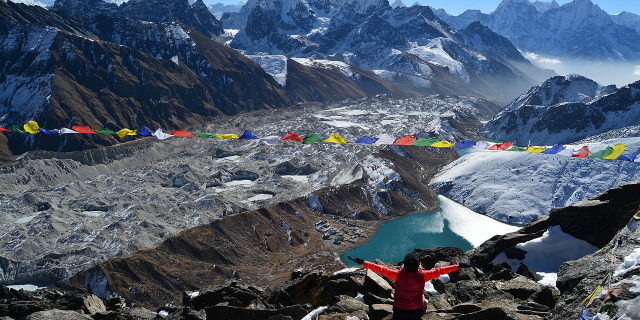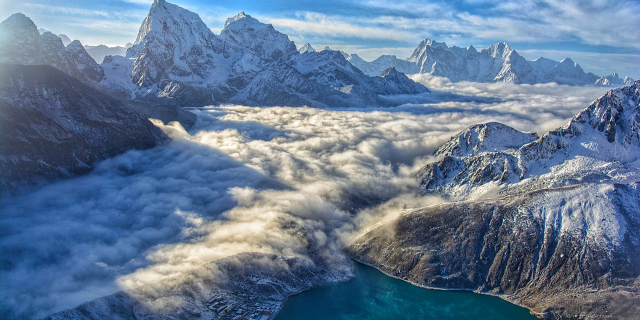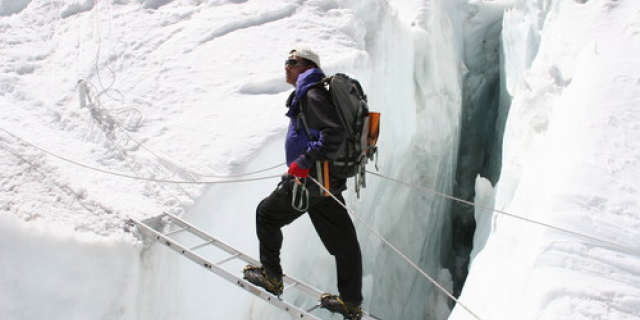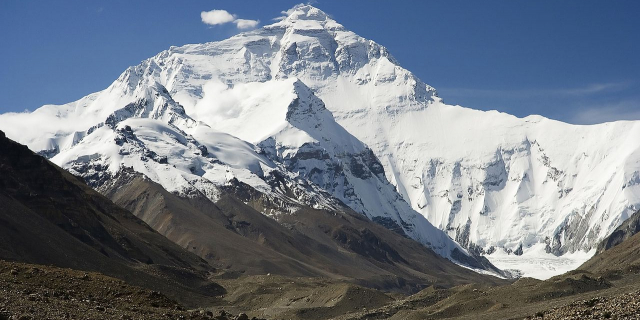Tengboche Monastery (or Thyangboche Monastery), also known as Dawa Choling Gompa, in the Tengboche village in Khumjung in the Khumbu region of eastern Nepal is a Tibetan Buddhist monastery of the Sherpa community. Situated at 3,867 metres (12,687 ft), the monastery is the largest gompa in the Khumbu region of Nepal. It was built in 1916 by Lama Gulu with strong links to its mother monastery known as the Rongbuk Monastery in Tibet. In 1934, it was destroyed by an earthquake and was subsequently rebuilt. In 1989, it was destroyed for a second time by a fire and then rebuilt with the help of volunteers and international assistance.
Tengboche monastery is amidst the Sagarmatha National Park (a UNESCO World Heritage Site of "outstanding universal value”), draped with a panoramic view of the Himalayan Mountains, including the well-known peaks of Tawache, Everest, Nuptse, Lhotse, Ama Dablam, and Thamserku.
Tengboche is the terminus site of the "Sacred Sites...Read more
Tengboche Monastery (or Thyangboche Monastery), also known as Dawa Choling Gompa, in the Tengboche village in Khumjung in the Khumbu region of eastern Nepal is a Tibetan Buddhist monastery of the Sherpa community. Situated at 3,867 metres (12,687 ft), the monastery is the largest gompa in the Khumbu region of Nepal. It was built in 1916 by Lama Gulu with strong links to its mother monastery known as the Rongbuk Monastery in Tibet. In 1934, it was destroyed by an earthquake and was subsequently rebuilt. In 1989, it was destroyed for a second time by a fire and then rebuilt with the help of volunteers and international assistance.
Tengboche monastery is amidst the Sagarmatha National Park (a UNESCO World Heritage Site of "outstanding universal value”), draped with a panoramic view of the Himalayan Mountains, including the well-known peaks of Tawache, Everest, Nuptse, Lhotse, Ama Dablam, and Thamserku.
Tengboche is the terminus site of the "Sacred Sites Trail Project" of the Sagarmatha National Park that attracts large number of tourists for trekking and mountaineering. It is a circular trail that covers 10 monasteries in a clockwise direction terminating in the Tengboche Monastery.
However, the actual establishment of the monastery happened only during Ngawang Tenzin Norbu's time; Norbu was considered Sangwa Dorje's fifth incarnation. He had established a monastery at Rongbuk in Tibet on the northern face of Mount Everest. He blessed Chatang Chotar, known as Lama Gulu, to found the Tengboche monastery at Tengboche village. As a result, it got established at its present location in 1916. It is the first celibate monastery under the Nyingmapa lineage of the Vajrayana Buddhism. Many older village-level monasteries are close by.[1]
Three wealthy inhabitants of the local Sherpa community are credited with funding building of the monastery. Among these three, Karma was the most influential and well known as he was a tax collector, and he also enjoyed the patronage of the Rana rulers of Nepal.[2] It is said that apart from Khumbu Sherpas, Sherung Sherpas have been involved with building this monastery. Some of the village temples, chortens and smaller religious shrines are predated to 1880, particularly all the large chortens. The Mani wall, made of slabs of stone inscribed with prayers and sacred texts is dated to 1915.[3]
The monastery was destroyed during the 1934 earthquake. Subsequently, Lama Gulu who had built it died. His successor, Umze Gelden, took up the task of rebuilding, with strong support from Ngawang Tenzin Norbu. The monks and the local community, with support from a skilled carpenter from Lhasa, re-established the monastery. Exclusive murals were painted by Kappa Kalden, a renowned artist. With an influx of tourists to the Khumbu region, particularly for trekking by mountaineers, the monastery has received wide recognition.[1]
However, the monastery's precious old scriptures, statues, murals and wood carvings were destroyed in the devastating fire caused by an electrical short circuit on 19 January 1989. The monumental stone credited with Lama Sangwa Dorje's left footprint had fractured. A few trekkers managed to salvage some books and paintings. It has since been completely rebuilt with money donated from around the world.
 A restored painting in the monastery
A restored painting in the monasteryFollowing the destruction of the monastery by fire, its rebuilding was undertaken by the present Nawang Tenzing Jangpo who is considered as the incarnation of the founder Lama Gulu, an important spiritual leader of the Sherpas. He has established an equation with many trekkers and climbers of all denominations who visit the monastery, which has helped him in finding funds for restoration. With due diligence to the set religious practices, the monastery has been substantially rebuilt. Tibetan painter Tarke-la's wall paintings that display the Bodhisattvas or the Buddha decorate the sanctum. In addition, the monks and Sherpa community with help from the Sir Edmund Hillary and Himalayan Trust, the American Himalayan Heritage Foundation and many international well-wishers have shown their support in several ways.[citation needed]
Hillary and Tenzing Norgay, an inhabitant of this village, were the first to reach the summit of Mount Everest on the British 1953 expedition. Thereafter, this monastery has acquired more international interest,[1][4][5] as it is on the route to the base camp of Everest for routes made via the Khumbu icefall and west ridge. Everest expeditioners visit the monastery to light candles and seek the blessings of gods for good health and safe mountaineering.[1][6]
 Everest climbers receive Tengboche monastery blessings from Ngawang Tenzing Jangpo. Ginette Harrison, Sir David Hempleman-Adams, David Callaway, Scott McIvor, Lee Nobmann, Brian Blessed.
Everest climbers receive Tengboche monastery blessings from Ngawang Tenzing Jangpo. Ginette Harrison, Sir David Hempleman-Adams, David Callaway, Scott McIvor, Lee Nobmann, Brian Blessed.John Hunt, the leader of the 1953 expedition and one of the first mountaineers to visit the monastery (most, but not all, previous expeditions approached the mountain from the northern (Tibetan) side), offered the following description of Thengboche in The Ascent of Everest:
Thyangboche must be one of the most beautiful places in the world. The height is well over 12,000 feet. The Monastery buildings stand upon a knoll at the end of a big spur, which is flung out across the direct axis of the Imja river. Surrounded by satellite dwellings, all quaintly constructed and oddly mediaeval in appearance, it provides a grandstand beyond comparison for the finest mountain scenery that I have ever seen, whether in the Himalaya or elsewhere.
The rebuilt monastery was formally consecrated in 1993 and is considered as the gateway to Mount Everest. The religious room of the Guru Rimpoche in the monastery was fully restored in September 2008. The entrance gate has also been rebuilt with funds provided by the Greater Himalayas Foundation based in Washington DC, United States.[8]
The monastery is said to be home to 60 monks reflecting its financial prosperity. It is also said that fewer and fewer young boys join as monks as they prefer to work in mountaineering or trekking-related activities.[9]
































Add new comment